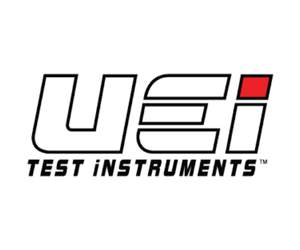BACK
 The Best (and Worst) Ways To Duct a Dehumidifier
The Best (and Worst) Ways To Duct a Dehumidifier
 The Evolving Career of the HVAC Contractor: Embracing Change to Stay Ahead
The Evolving Career of the HVAC Contractor: Embracing Change to Stay Ahead
 How To Do a Heat Maintenance That Actually Matters
How To Do a Heat Maintenance That Actually Matters
 Technology Trade-offs
Technology Trade-offs
 3 Tips for Training Apprentices
3 Tips for Training Apprentices
 Not All CFM Are Created Equal
Not All CFM Are Created Equal
 3 Things to Check When the Unit Won’t Keep Up
3 Things to Check When the Unit Won’t Keep Up
 Drain Trap Depth and Negative Pressure
Drain Trap Depth and Negative Pressure
 Observations from the Field: Insights Gained from HVAC Ride-Alongs
Observations from the Field: Insights Gained from HVAC Ride-Alongs
 VRF Tech Talk Takeover Podcast
VRF Tech Talk Takeover Podcast
 UEI at AHR: Carbon Monoxide Safety and Combustion Analysis
UEI at AHR: Carbon Monoxide Safety and Combustion Analysis
 What’s New With Copeland at AHR
What’s New With Copeland at AHR
 Good QC, Startup, and Punchout Processes
Good QC, Startup, and Punchout Processes
 Static Mistakes – Short #232
Static Mistakes – Short #232
 Santa Fe Talks Dehumidification at AHR 2025
Santa Fe Talks Dehumidification at AHR 2025
 Catching Up with Fieldpiece and Refrigeration Technologies at AHR
Catching Up with Fieldpiece and Refrigeration Technologies at AHR
 From Plumber to HVAC Owner w/ Manly Arnanson
From Plumber to HVAC Owner w/ Manly Arnanson
 EER in the Field – Short #231
EER in the Field – Short #231
#hvac
Tech Tips:

There are a couple of really important things to understand when ducting a dehumidifier. Getting one or both of these things wrong can throw off your entire dehumidifier install. Instead of just telling you the different ways you can install a dehumidifier, let’s talk through some dehumidifier basics, which will help us understand why it’s […]
Read more

This tech tip was written by Shelby Breger, co-founder of Conduit Tech. You can check out everything Conduit has to offer and learn more about that interesting platform and how it helps contractors at https://getconduit.com/. Thank you, Shelby! Before starting Conduit Tech, Marisa and I spent a year doing everything we could to learn about […]
Read more

I know I’m not the only one who has sometimes felt a little bad doing heat maintenance. I remember many a day when my lead technician and I (as an apprentice) would crawl into an attic, clean the flame sensor, and then play FarmVille on our phones for 15 minutes before crawling down, giving the […]
Read more

As a small business owner in the 21st century, I have recently been exposed to the overwhelming amount of new technologies and processes that I could use within my business. In the last few years, there has been a surge of software and connected tools that are entering the marketplace. All of them promise to […]
Read more

I hired and trained an apprentice who has worked 2 days a week for me over the last 4–5 months. I've been in business for almost two years, and I had a pretty good sense that I would need some help this summer. Hauling a few air handlers and furnaces into an attic by myself […]
Read more

We’re in the business of moving heat, but we have to move air to accomplish that. We use CFM (cubic feet per minute) to quantify the air we move over the indoor coil, and it helps to imagine hundreds of 1’x1’x1’ boxes of air moving over that coil each minute. (After all, 400 CFM is […]
Read more

What is your methodology for troubleshooting an HVAC system that “can’t keep up” on the hottest days of the summer? Let me walk you through my process and hone in on one or two ideas that have been overlooked for too long in our industry. In this article, I’m assuming we have ruled out intermittent […]
Read more

We recently received a Speakpipe question for the podcast about a common nuisance call on straight-cool A/C units and heat pumps. The systems, often retrofit units, were backing water up into the secondary drain pan and overflowing it. This issue isn’t happening on furnaces, which are positively pressurized, which means we have to take a […]
Read more

When we started Conduit, one thing that was incredibly important to us was that we constantly took lessons from the field to make sure we’re building the best product and process. HVAC Contractors around the country graciously let us ride in their trucks with them to visit customers. Our goal was to better understand the […]
Read more
Videos:
Podcasts:

Roman Baugh and Donald Falese from VRF Tech Talk podcast takeover the HVAC School booth at AHR EXPO 2025. Join them as they talk about the new VRF products being unveiled, water-cooled VRF ups and downs, and why VRF is such a difficult trade to work in. You will not want to miss this […]
Read more

In this informative podcast episode, Bryan from HVAC School is joined by Louise Keller, the National Training Manager for UEI Test Instruments, to discuss the critical importance of carbon monoxide safety and proper combustion analysis. The conversation begins with lighthearted banter about the previous night's Tactical Awards ceremony before diving into the serious topic […]
Read more

In this episode of the HVAC School podcast, Bryan sits down with James and Jeff from Copeland to discuss the evolution and capabilities of Copeland's mobile applications, particularly focusing on the Copeland Mobile app and the new Scout feature. James, who has been with Copeland for 28 years, and Jeff, who works as a […]
Read more

In this episode, Bryan is joined by guests Jacob and JD to discuss quality control (QC), punch out procedures, and best practices in HVAC installation and service. The conversation delves deep into the various aspects of maintaining high standards in workmanship, from aesthetic considerations to technical performance metrics that affect system longevity. The discussion […]
Read more

In this short podcast episode, Bryan covers some common mistakes when measuring static pressure. Static pressure is balloon pressure, not CFM or velocity pressure, but it can be an airflow indicator. The best way to start learning about static pressure is to start measuring total external static pressure. Gas furnaces and heat pumps are […]
Read more

In this insightful discussion at AHR 2025 in Orlando, Bryan connects with Nikki Krueger from Santa Fe dehumidifiers, exploring the evolution and importance of whole-house dehumidification in modern HVAC systems. Nikki, who has spent 20 years in the indoor air quality industry, shares her journey from a public relations background to becoming deeply involved […]
Read more

In this special episode from the 2025 AHR Expo, Bryan brings us two fascinating conversations with industry leaders who are shaping the future of HVAC technology and tools. The episode kicks off with Tony Gonzalez from Fieldpiece celebrating their 35th anniversary. Tony shares his remarkable journey from packaging meters in the warehouse to his […]
Read more

In this episode, Bryan speaks with Manly, an HVAC professional from Manitoba, Canada, about his journey from working in his family's plumbing business to running his own HVAC company. Manly shares his experiences working in extreme cold weather conditions, where temperatures can drop to -30°C (-22°F), and discusses the unique challenges and emergency response […]
Read more

In this short podcast episode, Bryan talks about EER (Energy Efficiency Ratio) and SEER (Seasonal Energy Efficiency Ratio) and how to calculate EER in the field. EER and SEER are ratings that we often see on equipment (as are SEER2 and EER2) based on a ratio of an output to an input. Whereas coefficient […]
Read more


















